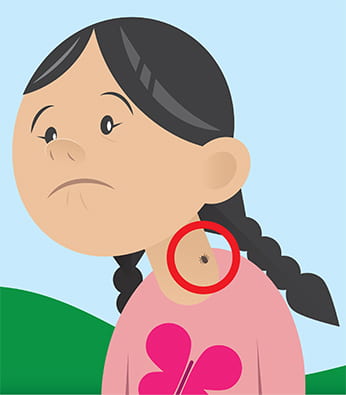Stubborn Pests: Organic Solutions
All crops have pests. Managing them on certified organic farms is firmly rooted in IPM practices such as crop rotation, sanitation, and the use of pest-resistant varieties. In fact, it’s written into the regulations. But despite the best IPM prevention practices, pesticides are still needed for certain stubborn pests. With organic vegetable production gaining in importance in New York—a 28% increase in the number of farms from 2011 to 2016—growers have an even greater need for objective information about allowed pest management products.
To provide that info, we teamed up with Cornell AgriTech faculty members Chris Smart, Brian Nault, and Tony Shelton to conduct trials. At the end of nine years, we have many successes that are effective options for cucurbit powdery mildew, squash vine borer, worms on brassicas, potato leafhopper, and others.
Alas, some pests still have us stymied, namely striped cucumber beetle and cucurbit downy mildew, so pesticide testing will continue. Next up, we focus on pests, beneficials, and weed IPM in organic squash production systems. And, to accommodate the increasing number of researchers working in organic systems, we’re helping Cornell AgriTech transition 24 acres of research fields into certified organic production. IPM and organic: natural partners.

(Above) Double damage. The sharp-dressed striped cucumber beetle causes direct damage, massing on newly emerged or transplanted seedlings and sometimes chewing them to the ground, while also transmitting a sometimes-fatal bacterial wilt.
Don’t Get Ticked NY!

(Above) Ticks prefer moist, warm places. Teach children to make tick-checks a personal habit—the last defense against disease transmission. Knowing the spots and bumps on their skin helps them recognize new ones—new ones that happen to have legs.
Ticks are really ticking off New Yorkers worried about Lyme disease, the United States’ number one vector-borne pathogen. It’s transmitted by the blacklegged tick found abundantly throughout our state. This particular pest can also spread diseases like anaplasmosis, babesiosis, and Powassan virus. Unfortunately, additional tick species abound, and together, the many illnesses they can cause are serious threats to human health. That’s why NYSIPM is committed to reducing the impact of these little blood-suckers.
Recognizing our ability to effectively convey key risk-reducing strategies, the NYS Senate’s Task Force on Lyme and Tick-Borne Diseases joined the fight by funding our Don’t Get Ticked NY campaign. We provide easy-to-understand information at the website, and distribute ID cards, infographics and tick removal kits to educators and the public statewide through community events, extension offices and BOCES. Last year we handed out almost 50,000 tick ID cards, a few thousand tick removal kits, and directly reached over 5,000 people.
“Tick-educated” New Yorkers now recognize tick habitats, and—rather than avoid the outdoors—now know how to look and feel for ticks during their daily tick check. While threats from ticks continue to increase, so does New Yorkers’ awareness of how to stave them off. So please … don’t get ticked, New York.

(Above) Get the pointy. Our Don’t Get Ticked New York Tick Kits are popular handouts at events across the state. You can make your own by gathering pointy tweezers, a magnifier, a mirror, alcohol wipes, and a vial or plastic bag to store the offender. But kits won’t help you if you don’t have them nearby. Our tick cards are the perfect resource to have on hand, and you can print out the same graphics from our website at www.DontGetTickedNY.org.